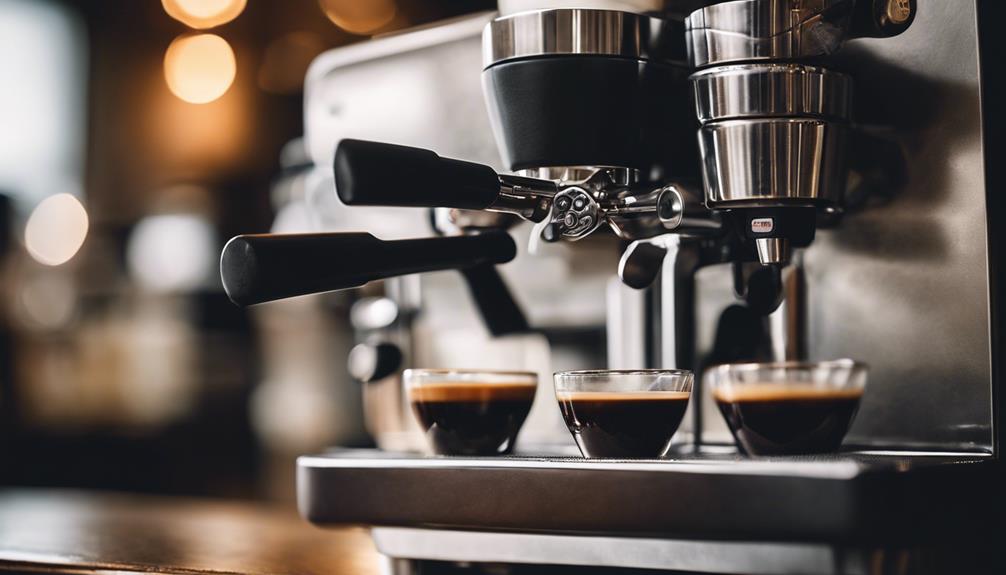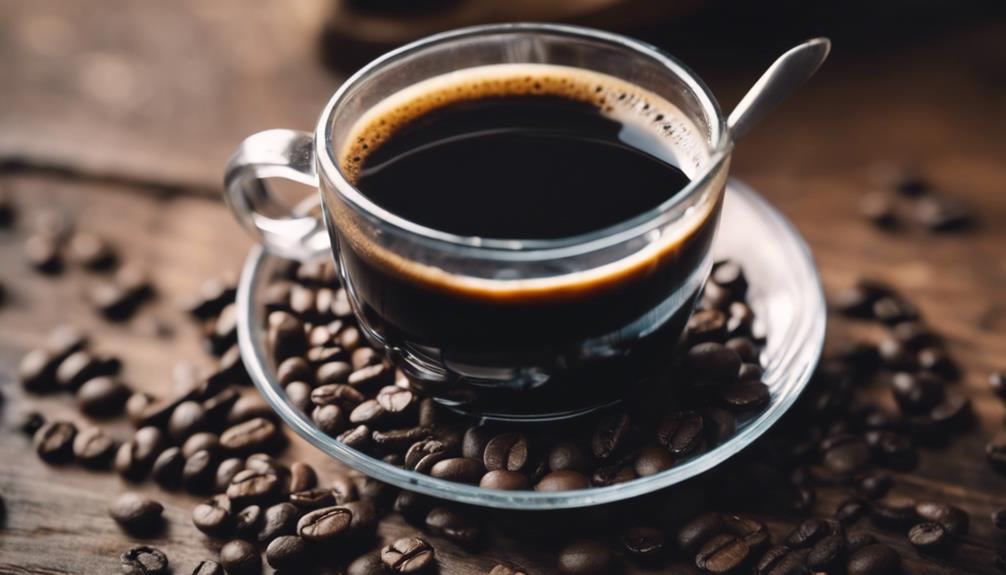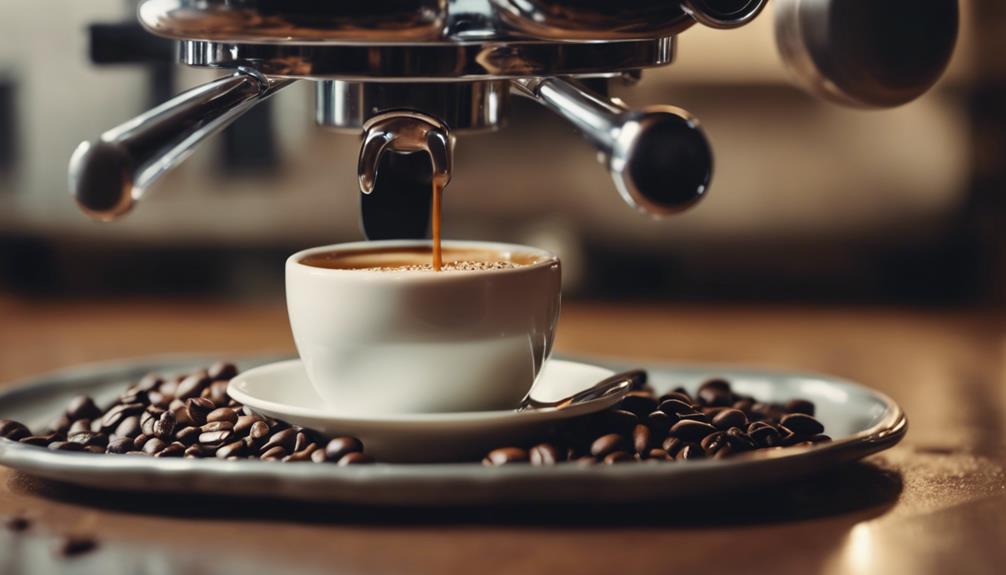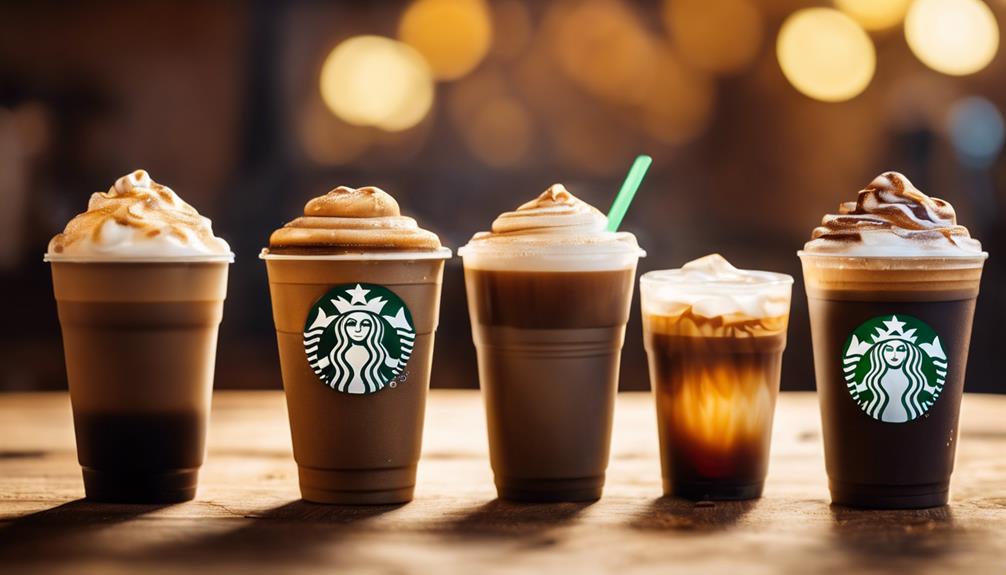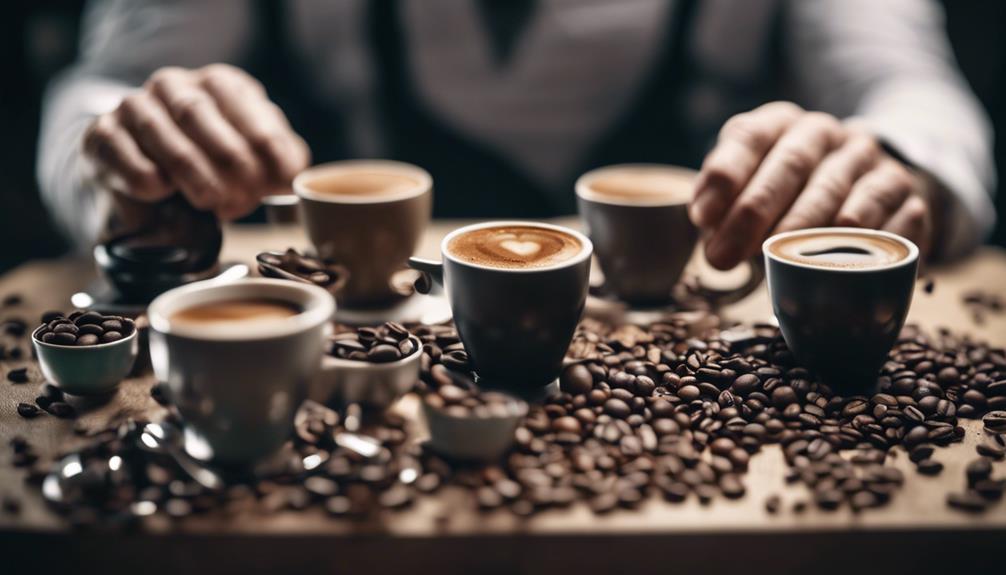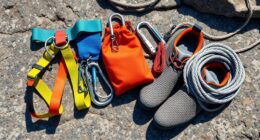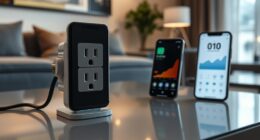To prepare espresso using your Ninja Coffee Bar, opt for dark roast beans specifically labeled as ‘espresso roast’ for a stronger flavor. Grind the beans finely to ensure a well-balanced extraction and consistent taste. Use filtered water at 200°F for optimal saturation. Follow the machine’s instructions, making sure to use finely ground beans and evenly tamp the grounds. Froth the milk gently for a smooth texture, adjusting the temperature as needed for your desired consistency. Experiment with various flavors such as vanilla syrup or almond milk to add some variety. Enjoy the intense espresso flavors on their own or mix with milk for a cappuccino. Try out different recipes to find your perfect taste experience. By mastering these steps, you can create barista-quality drinks right in the comfort of your own home.
Key Takeaways
- Use dark espresso beans for rich flavor.
- Adjust grind size for proper extraction.
- Follow machine instructions for brewing.
- Froth milk for cappuccinos or lattes.
- Experiment with syrups and toppings for variety.
Choosing the Right Espresso Beans
When selecting espresso beans for your Ninja Coffee Bar, opt for a dark roast to achieve a rich and intense flavor profile. The deep roasting process brings out bold and robust flavors that are ideal for creating a flavorful espresso shot.
Look for beans labeled as 'espresso roast' as they're specifically designed for best extraction and crema production, enhancing the overall taste experience. If you're looking to explore different flavor profiles, consider trying single-origin beans. These beans offer a unique taste experience, showcasing the distinct flavors of a specific region or farm.
To guarantee a well-balanced and flavorful espresso shot, it's important to choose beans with a fine grind. The fineness of the grind plays a significant role in the extraction process, allowing for the perfect infusion of flavors in your espresso.
Additionally, don't be afraid to experiment with various espresso blends to discover your preferred taste profile for your Ninja Coffee Bar. Variety in beans can lead to exciting flavor combinations that cater to your personal preferences.
Grind Size and Consistency
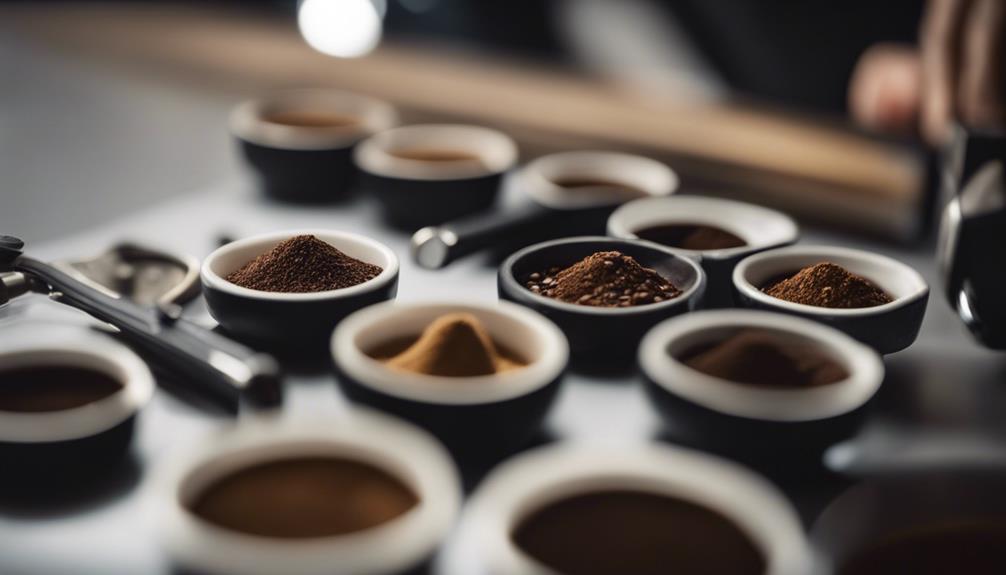
Achieve peak extraction and balanced flavors in your espresso by paying close attention to grind size and consistency. When preparing espresso drinks with your Ninja Coffee Bar, using a fine grind size is crucial to guarantee proper extraction of the coffee beans. Consistency in grind size is equally important as it contributes to balanced flavors and a smooth espresso shot. Adjusting the grind size based on extraction time and taste preferences allows you to personalize your coffee experience. Inconsistent grind size can lead to either over-extraction or under-extraction of the coffee, impacting the final flavor of your espresso drinks. To help you visualize the importance of grind size and consistency, refer to the table below:
| Grind Size | Extraction Outcome | Flavor Profile |
|---|---|---|
| Fine | Proper extraction | Bold and intense |
| Medium | Balanced extraction | Rich and smooth |
| Coarse | Under-extraction | Weak and watery |
Water Temperature and Quality

To guarantee peak extraction and flavor in your espresso using the Ninja Coffee Bar, pay attention to the water temperature and quality you use. Here are some key points to keep in mind:
- Water Temperature: Aim for around 200°F with filtered water for best extraction, ensuring that the coffee grounds are saturated and the oils are extracted to enhance the espresso flavor.
- Proper Saturation: The right water temperature plays an essential role in saturating the coffee grounds correctly, leading to a rich and flavorful espresso shot.
- Avoid Certain Water Types: Steer clear of distilled or overly softened water, as they can result in a flat-tasting espresso due to the lack of minerals and flavor complexity.
- Impact of Water Quality: Quality water is paramount for a great espresso, greatly influencing the taste and aroma of your coffee. Maintain the right water temperature and quality for consistently delicious results from your Ninja Coffee Bar.
Preparing the Espresso Shot
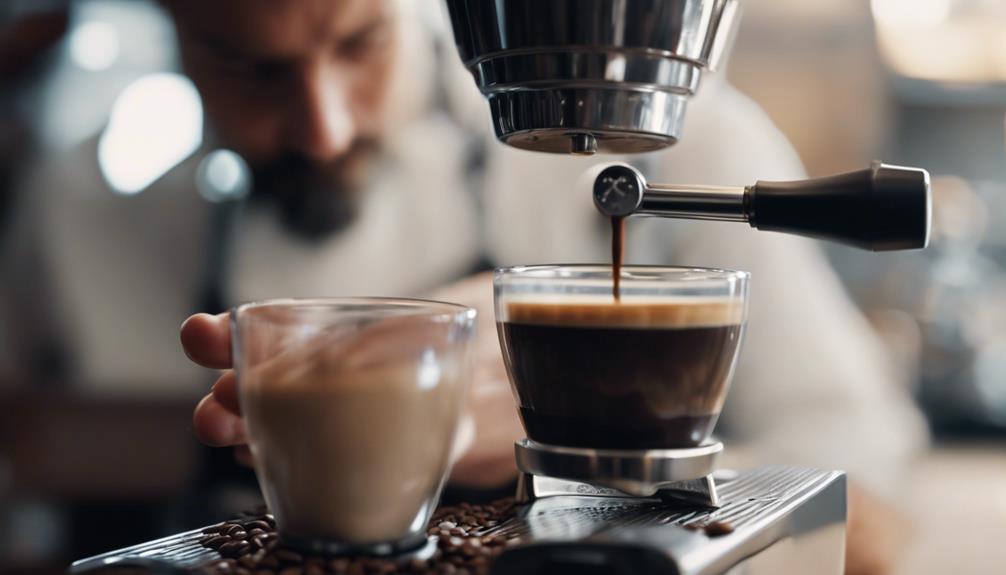
For the essential espresso shot in your Ninja Coffee Bar, start by using finely ground espresso coffee beans for best results. Follow the machine's instructions to select the espresso brewing option, then adjust the brew strength setting on the control panel to achieve your preferred intensity.
The Ninja Coffee Bar offers the flexibility to brew either a single shot or a double shot of espresso, catering to your specific taste preferences.
When preparing your espresso shot, make sure that the espresso grounds are evenly tamped down in the portafilter. This step is vital to ensure proper extraction and a well-balanced flavor profile in your espresso.
Frothing Milk to Perfection
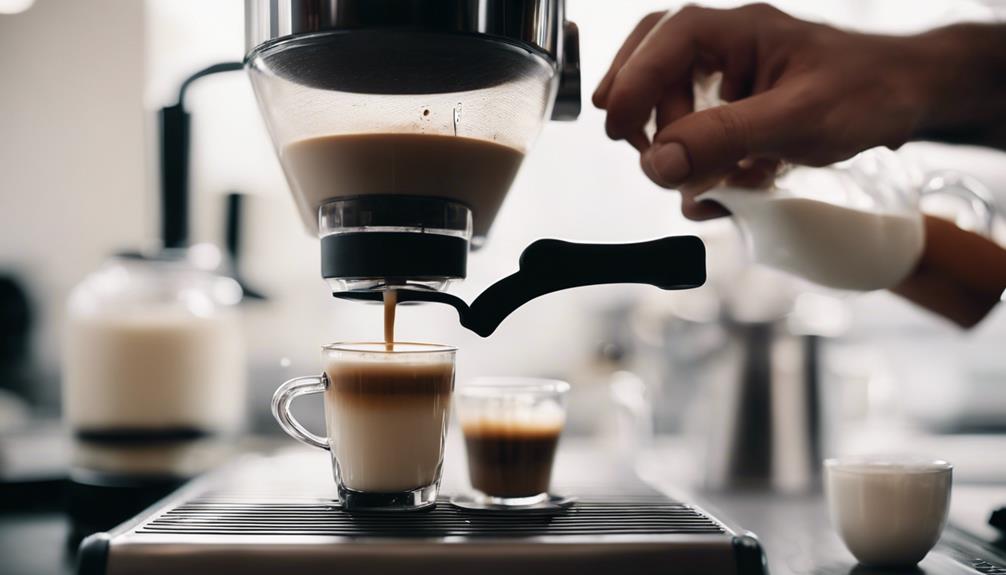
To achieve silky milk foam, make sure your frothing technique involves gently submerging the frother just below the surface of the milk.
Control the temperature for best froth by monitoring the milk's heat, stopping the frothing process once it reaches your desired warmth.
Experiment with various milk alternatives like soy or oat milk to discover unique flavors and textures that suit your taste preferences.
Frothing Techniques for Silkiness
Achieving a silky microfoam for your espresso drinks using the milk frother on your Ninja Coffee Bar is essential for enhancing their texture and taste.
To froth milk to perfection and achieve the ideal consistency for your beverages, follow these tips:
- Experiment with Milk Types: Try using different milk varieties such as whole, skim, almond, or soy to find the perfect froth consistency that suits your taste preferences.
- Adjust Frothing Technique: Modify your frothing technique to achieve varying levels of foam density, whether you're making a cappuccino with a drier foam or a latte with a creamier texture.
- Practice Makes Perfect: Regularly practice your frothing techniques to hone your skills and create barista-quality espresso drinks at home.
- Enjoy the Process: Have fun experimenting with frothing methods and milk types to discover the perfect combination that elevates your espresso experience to new heights.
Temperature Control for Froth
Experiment with the temperature control settings on your Ninja Coffee Bar to achieve the perfect froth consistency for your espresso drinks. The Ninja Coffee Bar allows you to customize the temperature of the milk frother, giving you control over the creaminess and foam levels.
By adjusting the temperature settings, you can tailor the frothing process to meet your preferences, whether you like a light foam for lattes or a denser froth for cappuccinos. The temperature control feature on the Ninja Coffee Barista System guarantees that you can create a wide range of espresso-based beverages with varying textures, all from the comfort of your home.
Consistent temperature control is crucial for producing high-quality frothed milk, leading to delicious and professional-grade lattes, cappuccinos, and other espresso drinks. Make the most of the precise temperature control settings on your Ninja Coffee Bar to enjoy barista-quality frothed milk in every cup you brew.
Frothing Milk Alternatives
Enhance your espresso experience by exploring alternative milk options for frothing in your Ninja Coffee Bar. When frothing milk alternatives, consider the following tips to perfect your espresso drinks:
- Experiment with Variety: Use almond, soy, or oat milk to discover unique flavors and textures for your frothed milk.
- Adjust Milk Temperature: Try frothing alternative milks at different temperatures to achieve the ideal froth consistency for your espresso beverages.
- Customize with Flavors: Enhance your espresso drinks by adding flavored syrups or sweeteners to the milk before frothing, creating a personalized touch.
- Consult Your Manual: Refer to the milk frothing instructions in your Ninja Coffee Bar manual for specific guidance on frothing different types of alternative milk.
Adding Flavors and Toppings
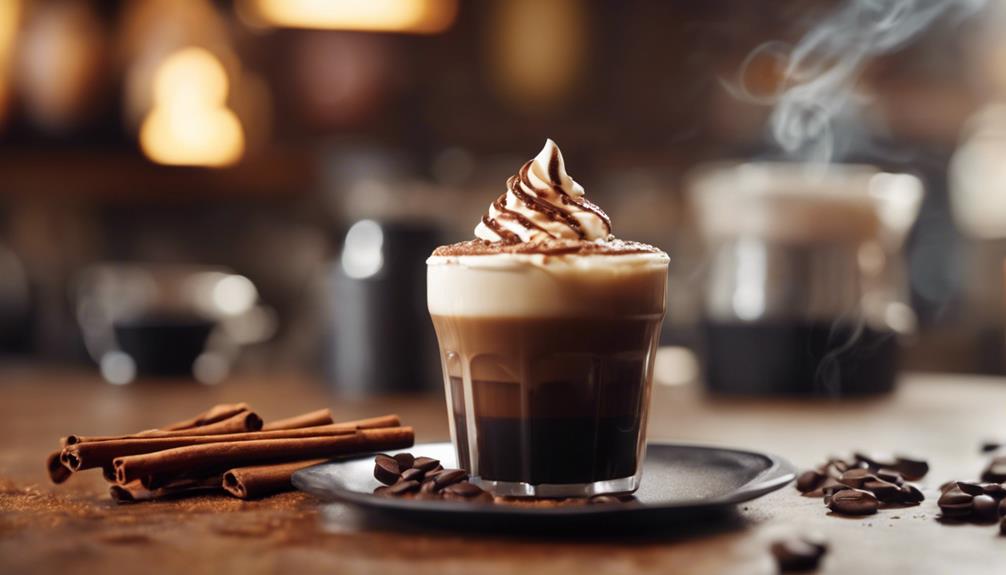
For a delightful twist on your espresso experience, consider adding flavors and toppings to elevate your brew. Enhance the taste of your espresso by incorporating flavored syrups like vanilla, caramel, or hazelnut. These syrups can add a touch of sweetness and depth to your drink. Additionally, experiment with different types of milk such as almond, coconut, or oat milk to create dairy-free variations of your favorite espresso beverages. These milk alternatives can bring a unique creaminess and flavor profile to your espresso creations.
Here's a helpful table to guide you through some exciting flavor and topping options:
| Flavors and Toppings | Description |
|---|---|
| Flavored Syrups | Vanilla, caramel, hazelnut |
| Types of Milk | Almond, coconut, oat |
| Cocoa Powder | Adds a rich chocolate flavor |
| Whipped Cream | Provides a creamy finish |
Experiment with these additions to craft personalized and delicious espresso drinks.
Serving and Enjoying Your Espresso
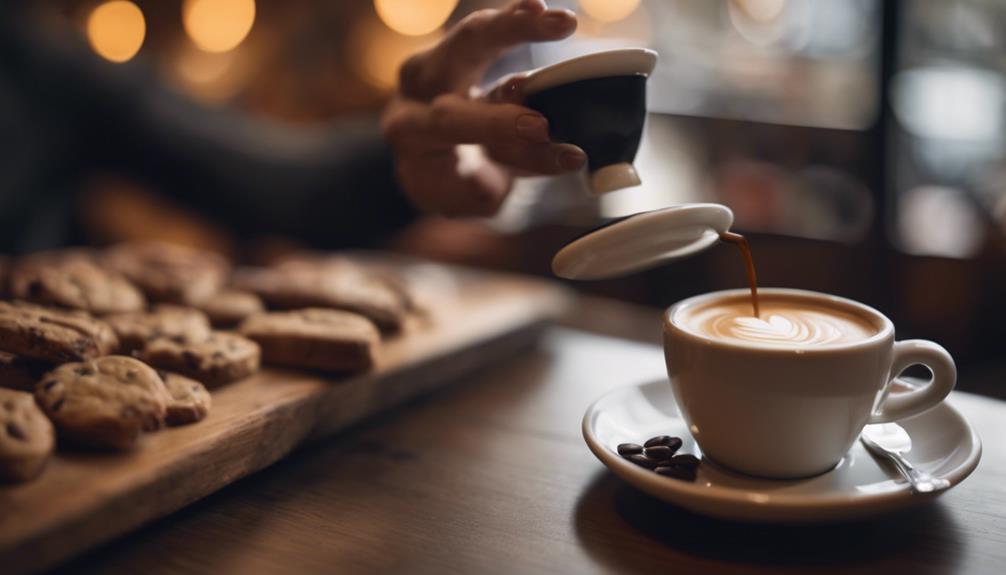
When serving and enjoying your espresso, savor the intense flavors of a freshly brewed cup straight for a robust coffee experience.
Here are some tips to enhance your delicious espresso:
- Mix your espresso with the right amount of milk to create a creamy cappuccino or latte.
- Try adding flavored syrups or spices to your espresso for an invigorating iced coffee treat.
- Serve your espresso over ice for an invigorating iced coffee treat.
- Experiment with different espresso drink recipes to find your favorite flavor combinations.
Frequently Asked Questions
Can I Make Espresso in My Ninja Coffee Bar?
You can definitely make espresso in your Ninja Coffee Bar. The machine comes with an espresso function and various settings to brew that perfect shot.
It accommodates both ground coffee and espresso pods, offering versatility in your coffee choices. The Ninja Espresso & Coffee Barista System allows you to brew single or double shots of espresso quickly, thanks to its rapid heating system.
Experience the convenience of making espresso-based drinks right at home with this machine.
Can You Use Espresso Pods in Ninja Coffee Maker?
Yes, you can use espresso pods in your Ninja Coffee Bar. Inserting the pod and choosing your brew size sets you up for a hassle-free espresso experience.
The variety of espresso pods compatible with the Ninja Coffee Barista System allows for a range of coffee choices. Enjoy consistent taste and quality with this convenient option, perfect for those seeking an easy way to make espresso-based drinks at home.
What Is Espresso Vs Lungo?
Espresso and Lungo are both coffee drinks made by passing hot water through coffee grounds under pressure. Espresso is a concentrated shot with a bold flavor, using a 1:2 coffee to water ratio and brewing for 25-30 seconds.
Lungo is a milder version, with a 1:3 ratio and brewing for 45-60 seconds, creating a smoother taste. The difference lies in their strength and brewing time, offering distinct coffee experiences.
How to Make a Latte With the Ninja Espresso & Coffee Barista System?
To make a latte with the Ninja Espresso & Coffee Barista System, start by brewing a single or double shot of espresso.
Next, froth milk using the built-in frother.
Combine the frothed milk with the brewed espresso in your preferred ratio.
Feel free to add syrups, spices, or toppings to customize your latte.
Can You Make Regular Coffee With the Ninja Coffee Bar?
Yes, you can definitely make regular coffee with the Ninja Coffee Bar. While it’s known for its versatility in making espresso with ninja coffee, it also offers the option to brew traditional coffee. The machine is capable of producing a variety of coffee styles to suit your preferences.
Conclusion
To sum up, mastering the art of making espresso in your Ninja Coffee Bar is a process that requires attention to detail and precision.
By carefully selecting the right beans, adjusting grind size and water temperature, frothing milk, and adding flavors, you can create a delicious and satisfying espresso shot right in your own home.
So, take your time, follow these steps, and enjoy the rich and bold flavors of a perfectly brewed espresso.
